From ancient portraits on coins to Elizabeth Taylor's famous portrayal, Cleopatra's looks have been depicted in countless ways throughout the millennia.
What did Cleopatra look like?
The physical appearance of the last Egyptian pharaoh has long been enigmatic. And since the Queen of the Nile has been portrayed in so many ways throughout the years, Cleopatra’s real face remains largely a mystery to this day.
History has left few clues behind. But that hasn’t stopped historians — and Hollywood producers — from running wild with speculation about Cleopatra’s real face. Was she a heart-stopping femme fatale like Elizabeth Taylor in the 1963 movie Cleopatra? Or was she simply a plain woman with “irresistible charm,” as the Greek historian Plutarch once claimed?

DeAgostini/Getty ImagesQueen Cleopatra’s image has been the subject of countless artworks, like this one by Frederick Arthur Bridgman in 1896.
Other than Cleopatra’s beauty, another topic that has inspired debate — especially in recent years — is her race. While the ancient queen is usually depicted as being white in Western countries, some have speculated that she was actually Black, or perhaps another race altogether.
In the 2,000 years since Cleopatra’s death and burial in a tomb that remains undiscovered to this day, historians have collected some evidence that might help us get closer to the truth.
Inside The Cleopatra “Race Controversy”
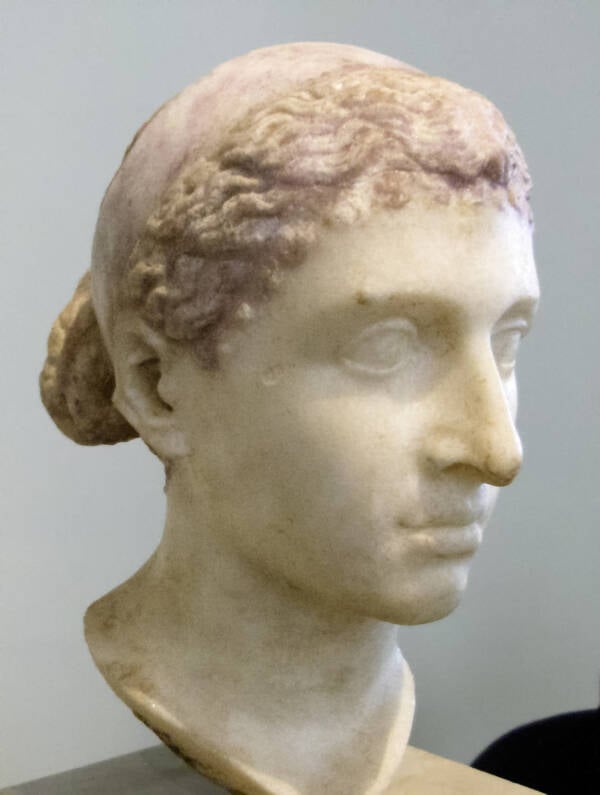
Wikimedia CommonsA possible bust of Cleopatra, which was made between 40 and 30 B.C.
Cleopatra was born in Egypt around 70 B.C. But contrary to popular belief, the queen probably wasn’t Egyptian herself.
In fact, she belonged to a line of rulers that descended from Ptolemy I. A general and historian, Ptolemy had traveled to Egypt with Alexander the Great. There, Ptolemy set himself up as the king after Alexander’s death in 323 B.C. Since Ptolemy had won over many native Egyptians by that point, they generally accepted his descendants as extensions of the pharaohs.
But Ptolemy came from Macedonian Greece, and his family seemed to avoid marrying native Egyptians. Instead, they usually married each other. This fact is significant. Often, the question: “What did Cleopatra look like?” is underlined with another: “Was Cleopatra Black?”
It’s difficult to say with certainty. Though Cleopatra’s Greek roots on her father’s side are well documented, the same cannot be said for her mother, whose identity remains uncertain to this day. And the Hellenic world wasn’t exclusively white. So just because a woman’s family hailed from Europe did not necessarily mean that they couldn’t have roots from another region.
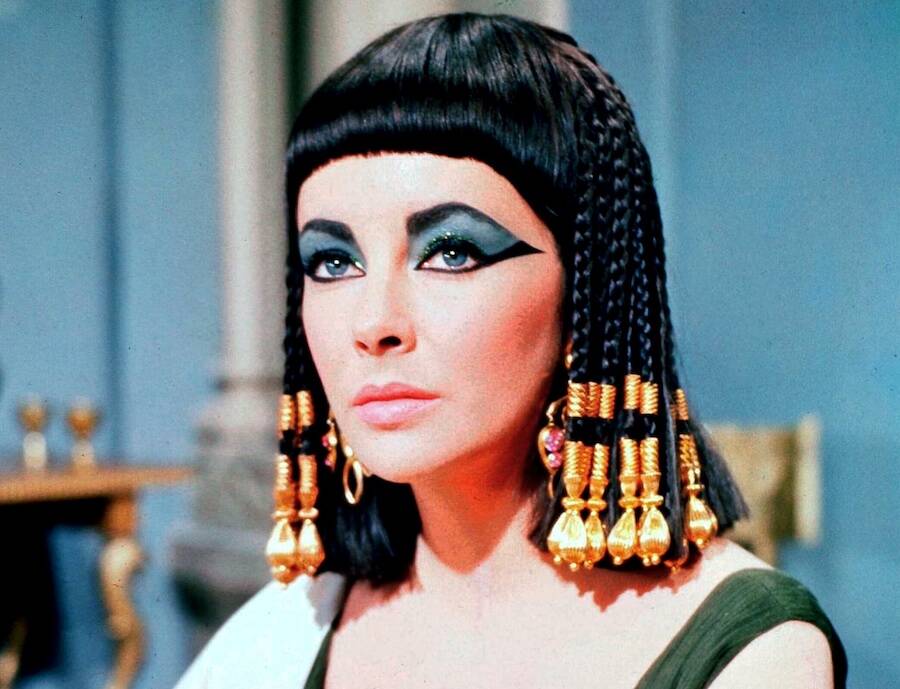
API/GAMMA/Gamma-Rapho/Getty ImagesElizabeth Taylor remains one of the most famous — if controversial — portrayals of the queen in recent history.
The Cleopatra “race controversy” has simmered for decades now, as many have questioned the uncertain ethnicity of the powerful queen — especially since she spent most of her life in North Africa.
But this topic has arguably been pushed to the forefront of debates on her appearance in recent years, as some modern moviegoers have criticized Elizabeth Taylor’s famous 1963 portrayal as well as the recent casting of Israeli actress Gal Gadot in a new movie about the queen.
If Cleopatra was indeed Black, one cultural historian claimed that it would “put the entire structure of Western civilization into question” — because that would mean the political world essentially revolved around a Black woman during a key time in global history.
But assuming that Cleopatra’s foremothers didn’t embark on affairs with native Egyptians — or other people who lived on the African continent — then Cleopatra likely traced her roots back to the Greeks.
Was Cleopatra Beautiful?
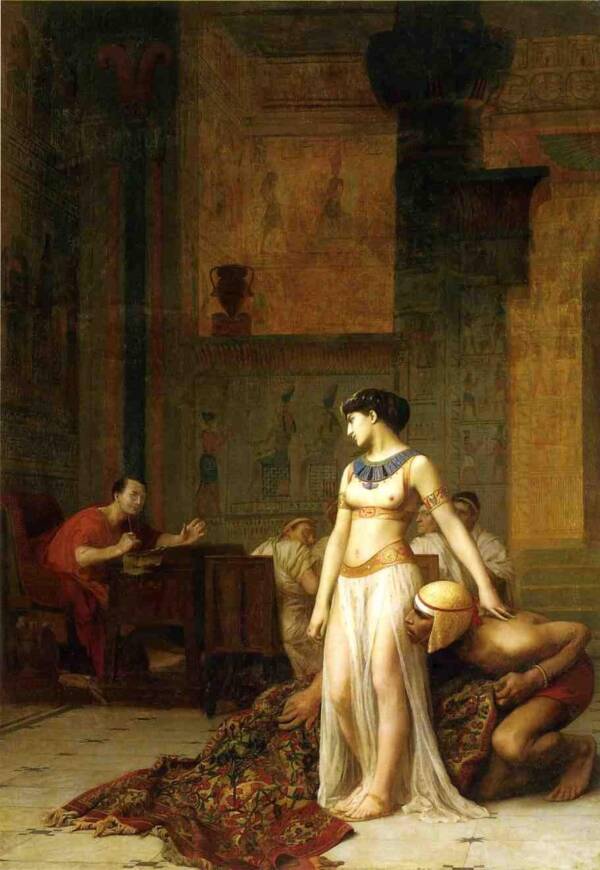
Wikimedia CommonsCleopatra revealing herself to Julius Caesar in a famous 1866 artwork by Jean-Léon Gérôme.
Regardless of her ethnicity, many people claimed that Cleopatra was stunningly gorgeous. During her life, she embarked on love affairs with two of the most powerful Romans of the age: Julius Caesar and Mark Antony.
As the story goes, Cleopatra met Julius Caesar in a spectacular fashion in 48 B.C. Caesar came to Egypt while Cleopatra was embroiled in a power struggle with her brother. Sensing an opportunity, she wrapped herself into a carpet and snuck into his chambers. Then she came tumbling out, asking for his help. Apparently captivated by the queen, Caesar agreed.
Before long, Cleopatra not only defeated her brother — but she also gave birth to Caesar’s son, Caesarion.
After Caesar’s assassination in 44 B.C., Cleopatra next trained her sights on Mark Antony. And she pulled out all the stops for him, too.
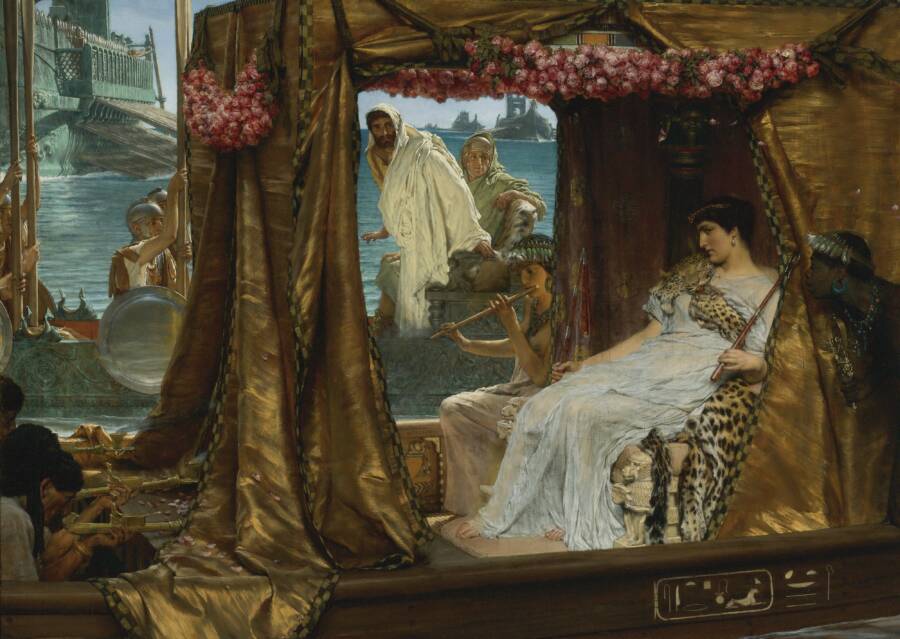
Wikimedia CommonsAs depicted in this 19th-century painting, Cleopatra made an impression when she met Mark Antony in Tarsus.
As described by Cleopatra biographer Stacy Schiff, Cleopatra rolled into the city of Tarsus (in present-day Turkey) in an “explosion of color.”
“She reclined beneath a gold-spangled canopy, dressed as Venus in a painting, while beautiful young boys, like painted Cupids, stood at her sides and fanned her,” Schiff wrote. “Her fairest maids were likewise dressed as sea nymphs and graces, some steering at the rudder, some working at the ropes.”
As the Greek historian Appian tartly noted, “The moment he saw her, Antony lost his head to her like a young man.”
This summons an interesting question: How did ancient Greek and Roman historians usually describe Cleopatra?
What Did Cleopatra Look Like? Ask Ancient Greek And Roman Historians
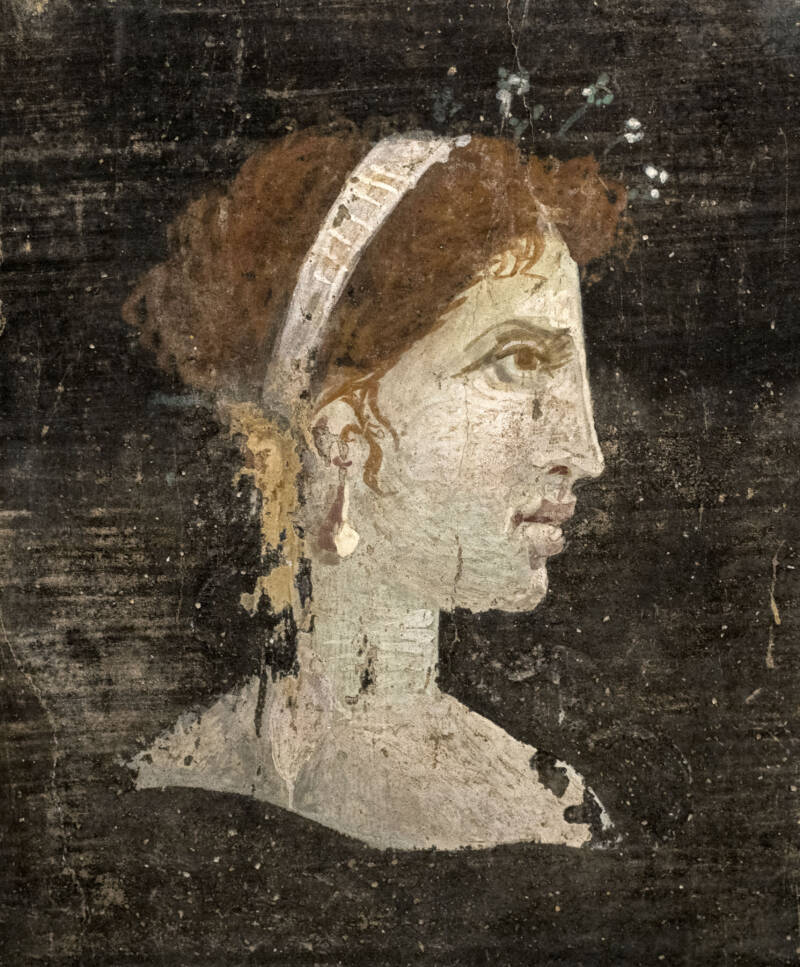
Wikimedia CommonsA first-century painting that possibly depicts Cleopatra after her death.
Mostly, Roman historians describe Cleopatra as beautiful. But while this might seem flattering or at least well-meaning today, it certainly wasn’t the best description during Cleopatra’s time.
When Cassius Dio describes Cleopatra meeting Caesar, he portrays the Egyptian queen as “brilliant to look upon and to listen to, with the power to subjugate every one, even a love-sated man already past his prime.” Dio also describes Caesar as “completely captivated” when he first meets the royal. Cleopatra, Dio declares, was “a woman of surpassing beauty.”
Plutarch presents a slightly more complicated view of what Cleopatra looked like. In describing Cleopatra’s meeting with Mark Antony, the Greek writer noted that “she was going to visit Antony at the very time when women have the most brilliant beauty and are at the acme of intellectual power.” But he also goes on to describe Cleopatra’s real face in less flattering terms:
“For her beauty, as we are told, was in itself not altogether incomparable,” he wrote, “nor such as to strike those who saw her; but converse with her had an irresistible charm, and her presence, combined with the persuasiveness of her discourse and the character which was somehow diffused about her behavior towards others, had something stimulating about it.”
Plutarch continued, “There was sweetness also in the tones of her voice; and her tongue, like an instrument of many strings, she could readily turn to whatever language she pleased…”
But their descriptions should be considered within the historical context. The Romans disliked and distrusted Cleopatra — as a foreign entity and a powerful woman. The first-century poet Horace described her as “a crazy queen… plotting… to demolish the Capitol and topple the [Roman] Empire.” And while Greek historians may have painted a more realistic picture of the queen, they also focused quite a bit on her physical appearance.
And during Cleopatra’s time, many male leaders portrayed her as an evil “whore” who could manipulate powerful men if they weren’t careful. This misogynistic depiction also served as a distraction from her many other impressive qualities — like her skills as a politician and her ability to speak multiple languages — which are largely still downplayed to this day.
Many people in modern times believe that Cleopatra was the ultimate seductress, but this image may be nothing more than propaganda originally pushed by Roman Emperor Octavian — who wanted to portray his rival, Antony, as someone who’d fallen into the trap of a foreign femme fatale.
Eager to support Octavian’s version of the story, many Roman historians may have described Cleopatra the way they did simply because it corresponded with their narrative of a wicked temptress.
Physical Clues About Cleopatra’s Real Face
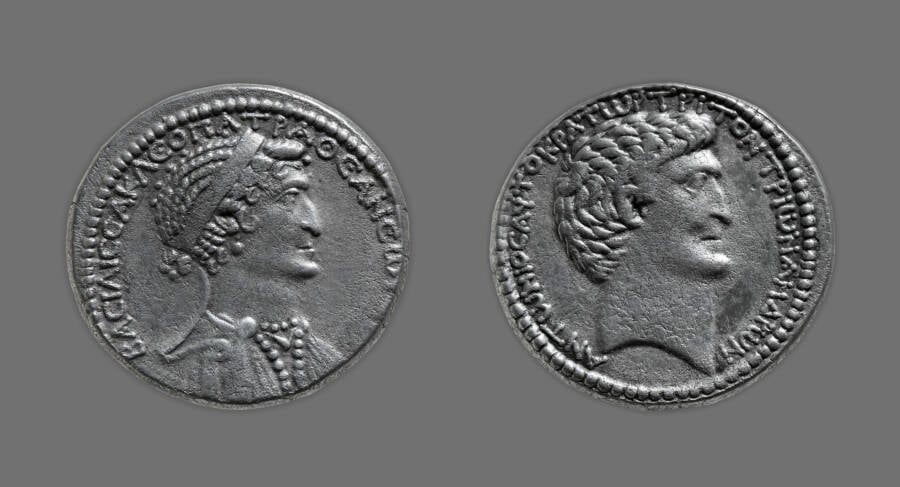
Public DomainCleopatra, left, and Mark Antony, right, on two sides of an ancient coin.
But modern historians don’t have to take the word of ancient writers. Cleopatra did leave some physical clues about her appearance.
Some of these can be found in coins. The coin above, minted during Cleopatra’s life, gives her curly hair, a hooked nose, and a jutting chin. Most coins of Cleopatra present a similar image — especially the aquiline nose. However, her image could have been Romanized to match Antony’s.
Aside from the Romans, the Egyptians also left some clues. The exterior walls of the Temple of Hathor are covered with engravings from Cleopatra’s day. She’s depicted in one design with her son Caesarion.

Wikimedia CommonsCleopatra and her son, depicted at the Temple of Hathor in Egypt.
However, if the Romans Romanized Cleopatra, the Egyptians Egyptionized her. She’s depicted like a goddess — which makes sense, as Cleopatra identified strongly with the goddess Isis during her life.
But when it comes to Cleopatra’s real face, ancient clues can be as puzzling as modern-day ones. Egyptians and Romans had their own interpretation of what Cleopatra looked like — just like the artists who followed.
So while there are many ancient depictions of her, most of them were created after her death — meaning that they often say more about the artist or the time in which the artist lived than they do about the real Cleopatra.
Why Does It Matter What Cleopatra Looked Like?

YouTube/Wikimedia CommonsOne artist’s reconstruction of Cleopatra, based on a historic bust.
For centuries, historians have debated what Cleopatra looked like and whether she was truly as lovely as the stories say. But some experts are frustrated by all the questions about Cleopatra’s real face.
“Why are we so obsessed with talking about whether she was attractive or not,” demanded Egyptologist Sally-Ann Ashton, “when really we should be looking at her as a strong and influential ruler from 2,000 years ago?”
Schiff agrees. “What unsettled those who wrote her history,” she writes, “was her independence of mind, the enterprising spirit.”
In other words, the men of Cleopatra’s day pinned her success to her appearance instead of her intellect. Most of them didn’t mention her political prowess and mastery of languages. Plutarch acknowledged Cleopatra’s “charm.” But others — playwrights, artists, and Hollywood producers — have also focused primarily on Cleopatra’s good looks.
However, some are simply curious about her appearance for historical reasons. Since it’s clear that her image has been at least somewhat embellished by both ancient historians and modern-day movies, it’s natural to wonder how much truth there was behind the tales.
So what did Cleopatra actually look like? We may never know. Despite efforts to locate her remains, her body has never been found. The real face of the iconic Queen of the Nile remains a mystery to this day.
But although good looks can fade, Cleopatra’s story has stood the test of time. Two thousand years after her death, she still captivates the world.
After reading about the enduring mystery of Cleopatra’s real face, check out these 11 fantastic women warriors from history. Then, browse through these photos of Egyptian culture before the British occupation.





